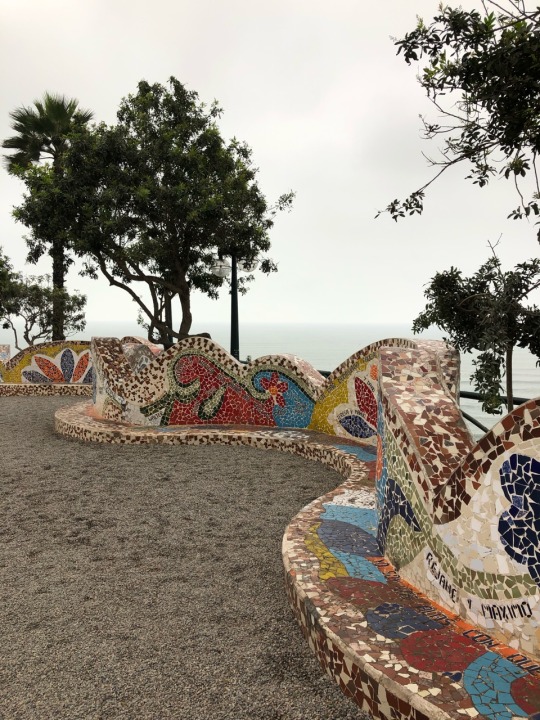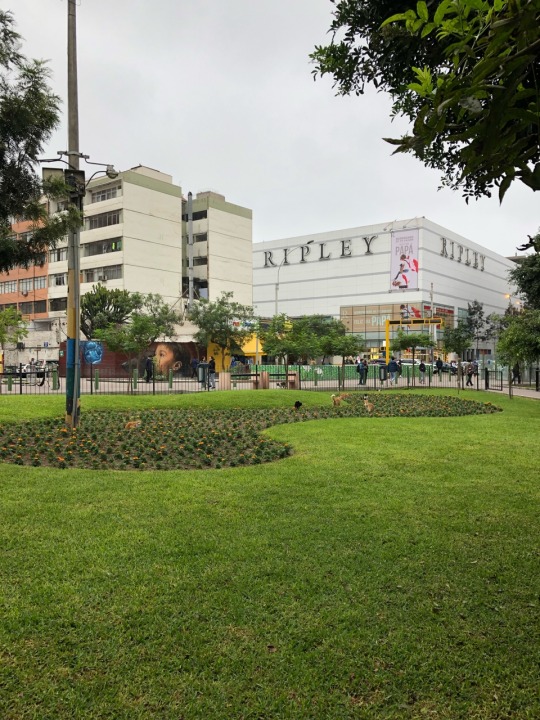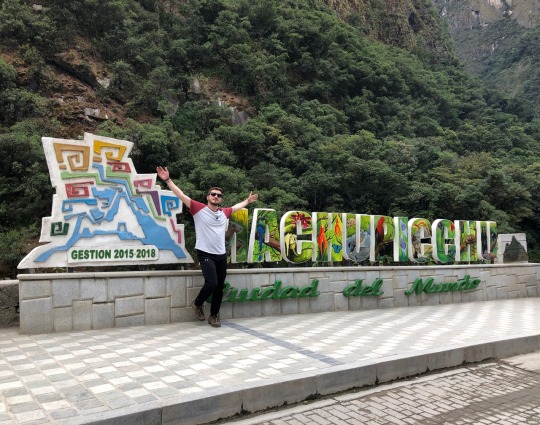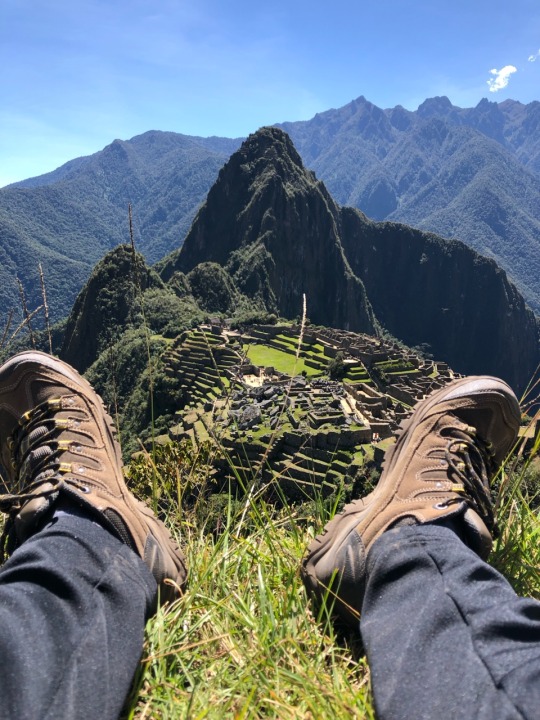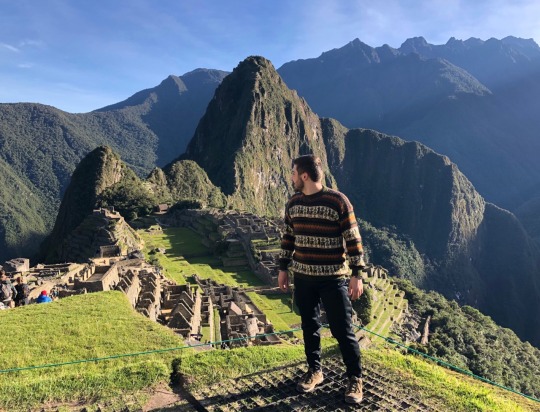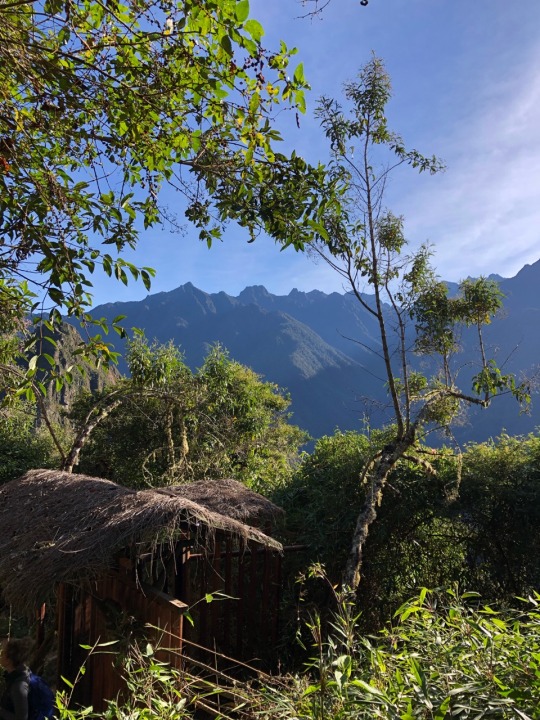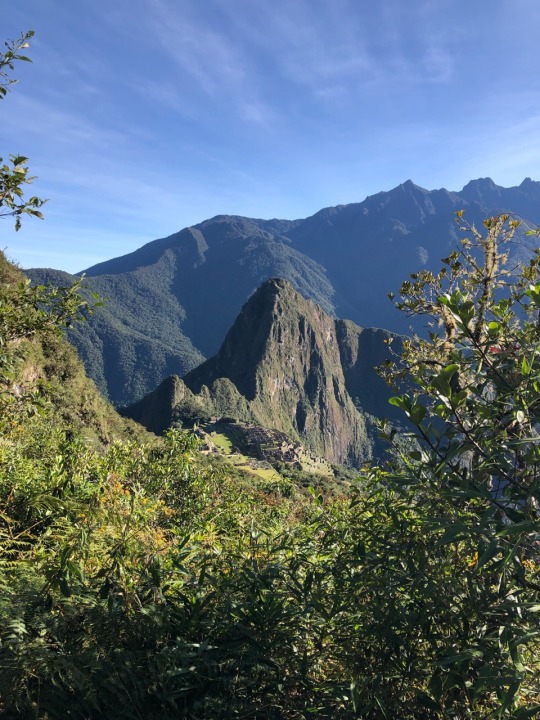Text
June 6, 2019- time to leave
After three weeks in South America, it was time to return home.
Three weeks in Peru was the perfect amount of time. I got to know a beautiful country with such a rich and fascinating history. I was able to pass by like Pablo Neruda had done some 80 years ago, and I was able to discover to what he had just been so attracted.
It is truly amazing to pass through; however, there exists another strange feeling to really connect through literature and poetry. Truly an experience that I will forever cherish.
I was able to meet many people on my journey. Through my hostels and homestays, the librarians and researchers in Lima, as well as speaking with tour guides and the locals, I was able to complete what I had come there to do.
This project allowed me to see more of South America, a country where a majority of the countries speak Spanish- my major and a language I hold close to my heart. Maybe one day I will end up here doing literary research of someone else?
This also posed an interesting question: do I want to continue in the field of Hispanic literature? Do I want to go into something else? I, believe it or not, had an enjoyable time translating Neruda’s verses. With a little more practice, maybe that belongs in my future?
All I know is that I enjoy the Spanish language and its diversity. In spring of 2018, I studied abroad in Spain and gained a plethora of knowledge there. However, Peru is not Spain, and it holds its own unique history- a history just as fascinating and mysterious. Maybe historical research is in my path. Maybe not.
Whatever it is that I will do, this project taught me more than I am able to comprehend. I unlocked doors to places I never thought I would enter. I connected with spaces that I never believed meant a thing to me. However, that is the great thing about travel and especially travel with a purpose. It is fruitful, informative, and rewarding.
0 notes
Text
June 4th, 2019- Huaca Pucllana, Lima, Peru
When I thought that not much remained in Lima, I had thought wrong.
There were ruins of a pyramid right in the middle of Miraflores, the neighborhood in which I was staying in Lima during my last couple of days.
Upon pondering the question of “what is a Peruvian?”, I thought I would check this out.
I was surprised; what I thought was going to be so stoned, in fact, turned out very interesting and helped with my project. The pyramid was constructed between 200AD and 700AD. That is to say, this is pre-Inca. These ruins= remains of another culture?
Most of the world likes to think of Peru as a place where the Inca thrives. However, what most people do not know is that there had been other people in Peru before the Inca.
The Inca didn’t conquer much of Peru until the 1400s. Before them, numerous peoples of great diversity lived amongst tribes in Peru. These ruins in which I was in the middle of Miraflores come from the Lima Culture, and indigenous civilization which existed before the Inca, in modern day Lima.
It is easy to think that Peru is characterized by Andean cultures and the blending with Europeans; however, Andean traditions, customs, and ideas are the result of thousands of years of history- a much longer time than the Inca and the Europeans.
Cultures like the Lima Culture have older origins, and because of Inca conquest in the 1400s in Peru, these civilizations ceased to exist. They were combined with the other civilizations scattered around Peru.
So we must dig deeper and dicover the true origins of modern products. There is a larger history than what meets the eye.
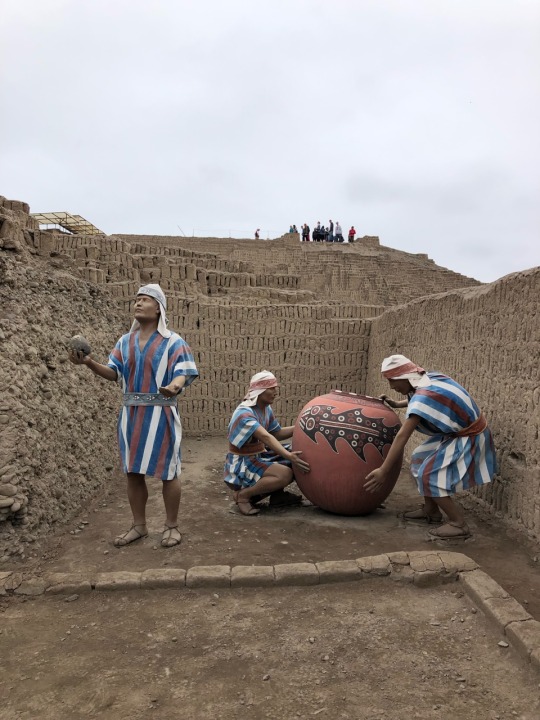

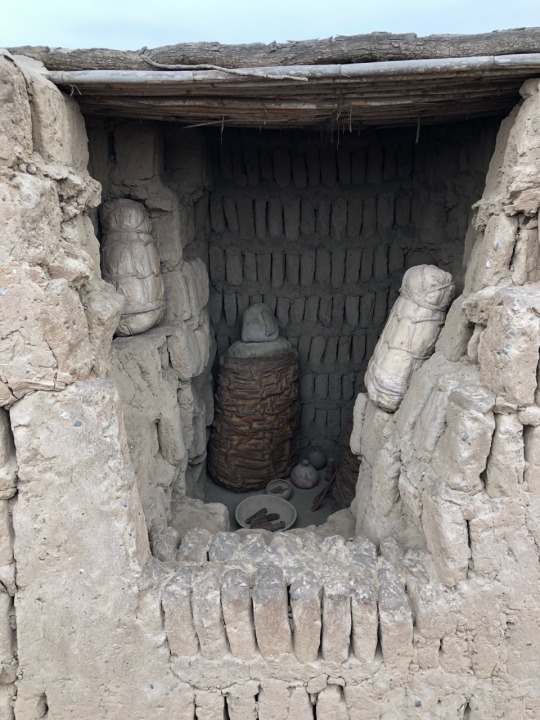


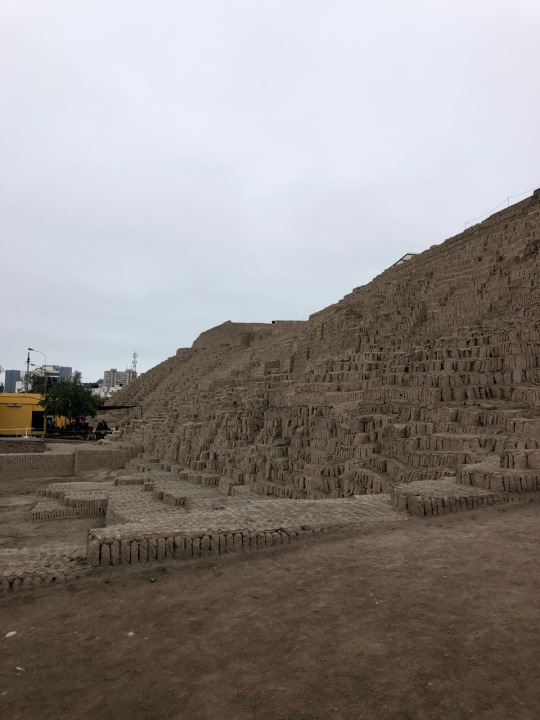
0 notes
Text
June 2, 2019
Today, I met with Profesor Alapañés and her Jayterm trip to tour the Cathedral of Lima, or the Basilicia of Lima.
All I can say is that it was beautiful. Also after seeing spanish tiles that resemble those of Sevilla, I was again intrigued by the transculturation that had occurred while the New World was being discovered and how these pieces from distant lands had remained. A big question that arose throughout this project was “what is a Peruvian?”, as it constantly overlaps with the idea of the natural people had blended with the Europeans. This is modern Peru, and it is almost inevitable to notice this.
Neruda was horrified by what European colonization had done to Peru, as we have seen in previous posts concerning his epic poem. However, we are unable to change the past, and we do not have power at stopping what had happened in the 16th and 17th century.
What we can do is admire what there once was, preserve, and utilize it in modern day. Andean culture still survived despite the horrors of European conquest. Although a bit different, we can analzyze what once was, what had came, and the resulting product that exists in Peru today.

0 notes
Text
June 1, 2019
Return and rest. Everything that Cusco had to offer was amazing and beautiful; however, it had really taken its toll. In attempt at doing as much as I can, I found myself extremely tired as I returned to Lima. A sleep at the hostal all-day kind-of-day. :-D
0 notes
Text


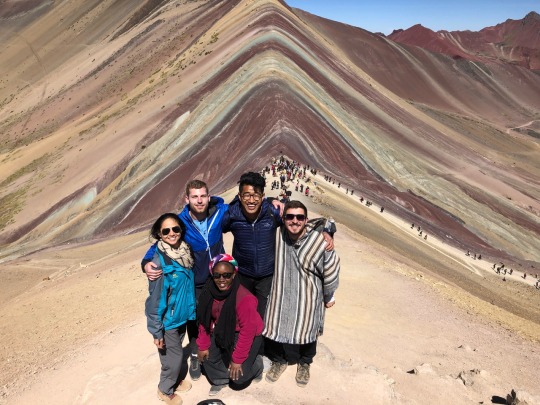


May 31, 2019
Met with my friend Chynna who was doing an ESL internship in Cusco.
I was searching for things to see around the Scared Valley, and I remembered the Rainbow Mountain.
Despite some issues the morning of, Chynna and I explored this sight together. It was only discovers about 5 years ago.
It is so amazing to see such beautiful places in just this small area in a country some 3000 miles away. A connection with the land is what I sought, and due to the diversity in its beauty, I was able to know such varying sights while in the Sacred Valley. Neruda wouldn’t be proud!
Tomorrow I will be on my return stretch; toward Lima I go.
0 notes
Text
May 29, 2019-continued
The Sacred Valley tour had provided me with more than I could have had imagined.
I was able to see less popular sites of the Scared Valley-aka a realistic vision on how Andean people live without as much tourism as Machu Picchu and Cusco. This I truly needed and was crucial to understanding the natural people of the land.
Sure, readings, analyzing, and touring ruins aids a lot in my understanding of the country in which Neruda was fascinated.
However, I need some first-hand insights and views of the true lives that are lived in the Sacred Valley. As you can see in the pictures, I was capable of viewing such! Very cool.
Andean people simply simply. Men work mostly with crops on farmland, while women weave and work with making fabrics. The both come together to create very practical lives, and these people are able to live comfortably.
Although the ruins have lost the sacred connotation that they had once had, they still remain as a reminder of the empire that once existed for hundred of years in South America. It is truly incredible that so much are still in tact after years of conquest and destruction by various peoples.
0 notes
Text

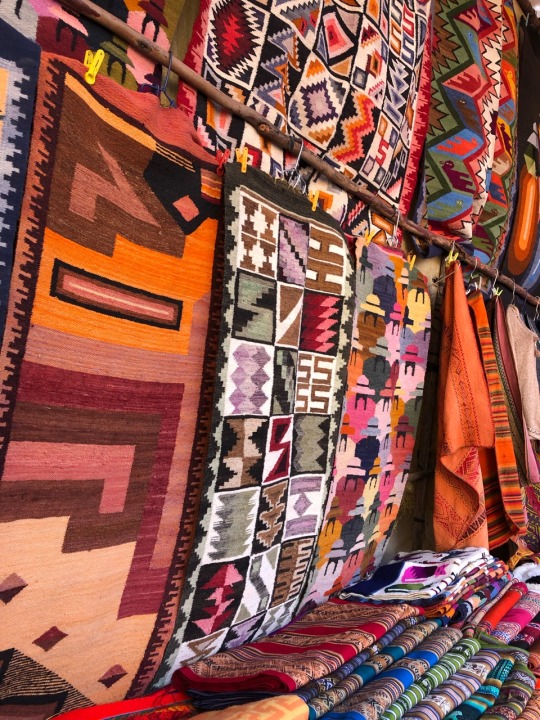

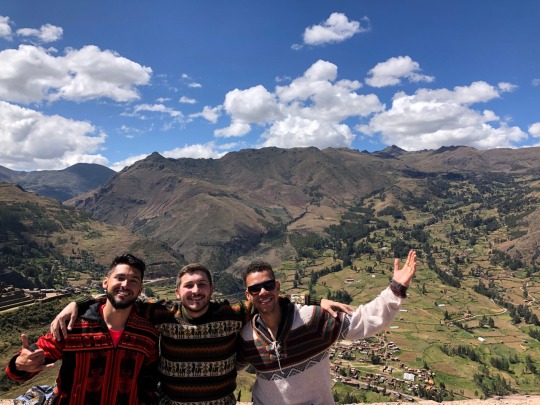


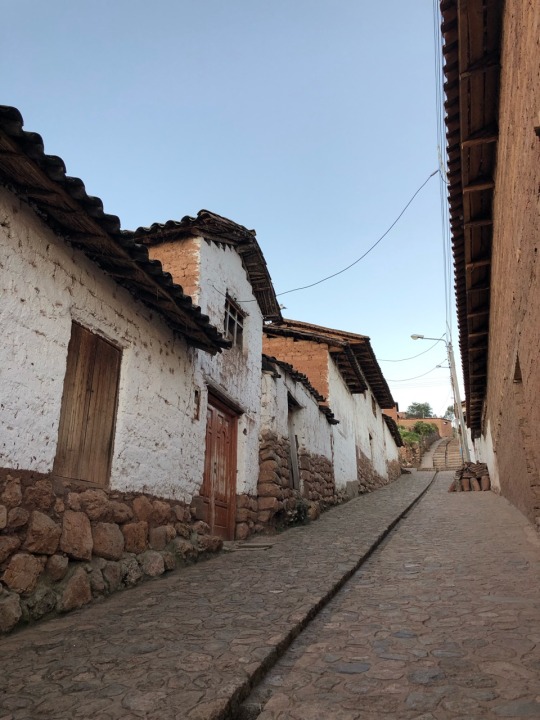
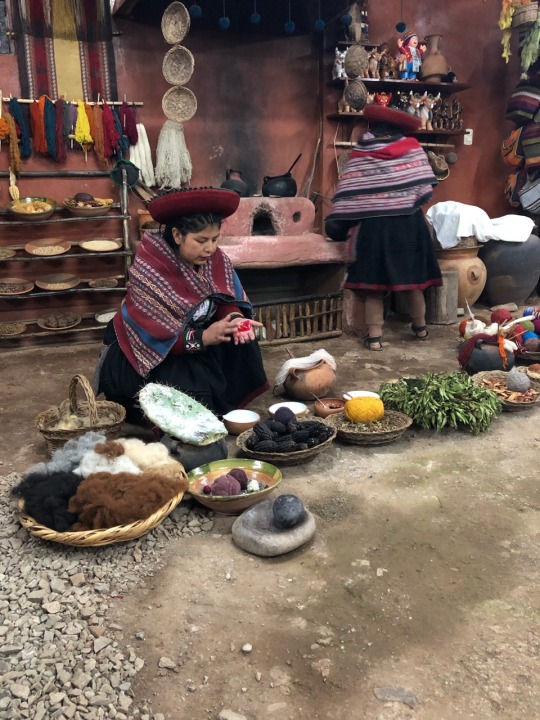
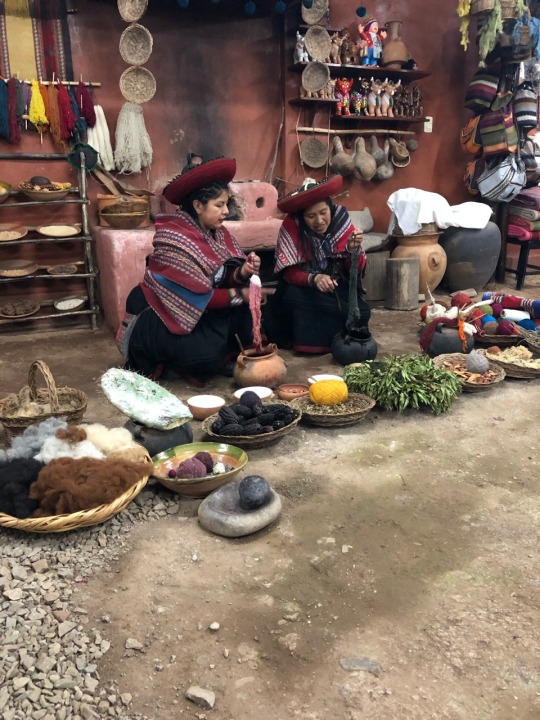

Pictures from the Scared Valley tour.
Ollantaytambo- incan ruins and the sun gate. Sacred sites for the Inca.
Chinchero- presentation on dying fabric and threading. A tradition in Andean cultures and done mostly by women. Alpaca, sheep, and other furs are used to creat fabrics, blankets, ponchos, just about anything. As you can see I decided to by myself a little something...
Pisac- largest aristan market in the Sacred Valley area. Best prices as well!
0 notes
Text
May 29, 2019- Scared Valley Tour
I may have been a little crazy to schedule a tour of the Sacred Valley (the outskirts of Cusco) a day after returning to Cusco. Machu Picchu had practically killed me! However, I survived, caught the bus for the tour, and had an amazing time. Photos to come next :-)
0 notes
Text
May 28, 2019- return to Cusco, Peru
The trek to Machu Picchu had been a great journey, and it had lived entirely up to its expectations. I was amazed, and by the help of my project criteria, I feel I was able to have a sublime and special connection with the scared city.
More reading of Neruda to continue, as I can now really gain a deeper connection with his words that he had written so long ago. Truly amazing to be in place that inspired Neruda so much. In a place that has inspired me more than I had originally thought.
Amazing day at Machu Picchu.
0 notes
Text
Alturas de Machu Picchu, XII,
Yo vengo a hablar por vuestra boca muerta.
A través de la tierra juntad todos
los silencios labios derramados
y desde el fondo habladme toda esta larga noche
como si yo estuviera con vosotros anclado,
contadme todo, cadena a cadena,
eslabón, y paso a paso,
afilad los cuchillos que guaradsteis
ponedlos en mi pecho y en mi mano,
como un río de rayos amarillos,
como un río de tigres enterrados,
y dejadme llorar, horas, días, años,
edades ciegas, siglos estelares.
........
I come to speak for your dead mouth.
Throughout the land gather together
the silent and scattered lips
and from there, speak to me of that long night
as if I were there with you all together,
tell me everything that happened,
step after step,
sharpen the knives that you had hidden
pierce them in my chest and hands
like a river of yellow rays,
like a river of captured tigers,
and let me cry, hours, days, years,
ages, centuries.
-------------------------------------------------------
As I mentioned in my last literary post, I am not a translator; however, I have done the best I could (using the best of my abilities) to translate this beautiful part of chapter XII of Alturas de Machu Picchu.
I feel this part is extremely important to include.
Here, we are able to clearly absorb and understand Neruda and his anger. Neruda writes 12 verses without a single period- emotion is evoked here. Neruda shares his stress, anger, sorrow, pity- the list of evoked emotions goes on. However, it was very important that I engaged with this text to fully understand where I had been standing (in Machu Picchu) in order to understand Neruda and understand the project that I had been completing.
Neruda talks of European invasion. He speaks for the voices that did not survive- those that are not present- a key element of surrealist literature. Neruda exemplifies it beautifully.
He discusses the act of imperialism, and act that could have been seen as evil coming from his marxist perspective- again, surrealist literature.
Neruda’s sorrow grows so deep, and by the end of the lines we see Neruda’s emotions get the best of him- “sharpen the knives that you had hidden / pierce them in my chest and hands / like a river of yellow rays, / like a river of captured tigers, / and let me cry, hours, days, years, / ages, centuries.
These beautiful lines display pain, sorrow, and agony. Neruda, a Chilean, had grown so connected with foreign lands, and he shows it in his poem.
0 notes
Text
Alturas de Machu Picchu, XII, 379-385- connections and reflections
Sube a nacer conmigo, hermano.
Dame la mano desde la profunda
zona de tu dolor diseminado.
No volverás del fondo de las rocas.
No volverás del tiempo subterráneo.
No volverá tu voz endurecida.
No volverán us ojos taladrados.
...
Come to be born with me, brother.
Give me your hand from the depths of your scattered pain.
You shall not return from the bottom rock.
You shall not return from the underground.
You hardening voice shall not return.
Your drilled out eyes shall not return.
----------------------------------------------
Above is a segment of the large epic poem by Neruda, Alturas de Machu Picchu (Heights of Machu Picchu). The translations are done by me, so they may not be the most accurate. However, I tried my best to capture the pathos that Neruda evokes.
In just five lines, we are able to see Neruda’s frustration with the New World- conquest, the idolization of foreign objects and beings, and the forgetting of the natural world that once existed. Neruda reaches out to these peoples, asking for them to be born again, and they shall not return to the hardened life of which they have suffered for so long (scattered pain, depths of the bottom rock, the underground, etc.)
In my opinion, Machu Picchu is used as a symbol by Neruda. The forgotten city located so high up is a symbol of a society that once was; however, it managed to stay in tact so many years after European conquest and ultimately provided hope for many generations, as well as Neruda, himself.
0 notes
Text
May 27, 2019- Machu Picchu
I woke up at 4:30AM in order to start the long day ahead of me...
I left my hostal in Aguas Calientes and headed down the street to the bus station- the bus that would take me up to Machu Picchu. While waiting there, I couldn't help but feel all sorts of emotions; I was anxious, excited, and nervous. But why nervous? May I was going to dislike the spectacle that I was just an hour and a half from seeing.
The bus had finally departed, and we made our way up the winding road. With my ticket in hand, I was ready to enter one of the Wonders of the World- only found a century before.
...
After waiting for my entrance time, I had finally walked through the gate with great excitement. The energy that each person waiting brought was something so odd yet so enticing for me.
Upon heading up a large amount of stairs, there it was in front of me- the city of Machu Picchu. At sunrise.
I find it hard to put into words how I feel and I contemplated documenting in my journal. However, it was one of those feelings you get when you are in so much awe, and the energy is just so overwhelming that you want to tear up. I felt something like this, and I had only experienced this feeling a pair of times before.
I had made it. I had gotten to the forgotten city that captured Neruda’s heart.
0 notes
Text
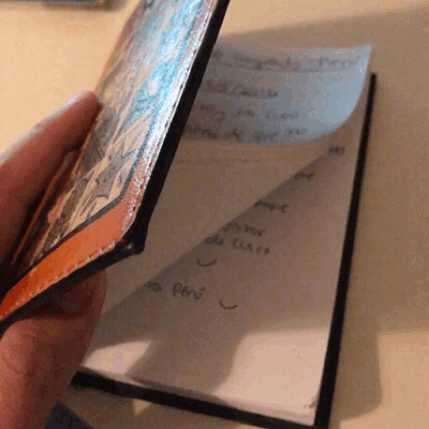
One of my plans for this project was to by a journal. It was not used just for writing about my day, but instead I used it in order to record my surroundings and thoughts in regards to the Scared Valley of Peru (Cusco and the surrounding areas).
I bought it in Cusco for a couple of dollars, and used it often during my time throughout Cusco and the surrounding areas.
I recorded my thoughts and observations in Spanish. By doing so, I was one step closer to gaining a better understanding of the area by using the country’s official language to think, speak, write, and observe.
The journal was used as form of reflection, adoration, and observation. It was used in order to connect with the land and what it encompassed. Neruda had done the same- except his reflection yielded beautiful verses.
0 notes
Text
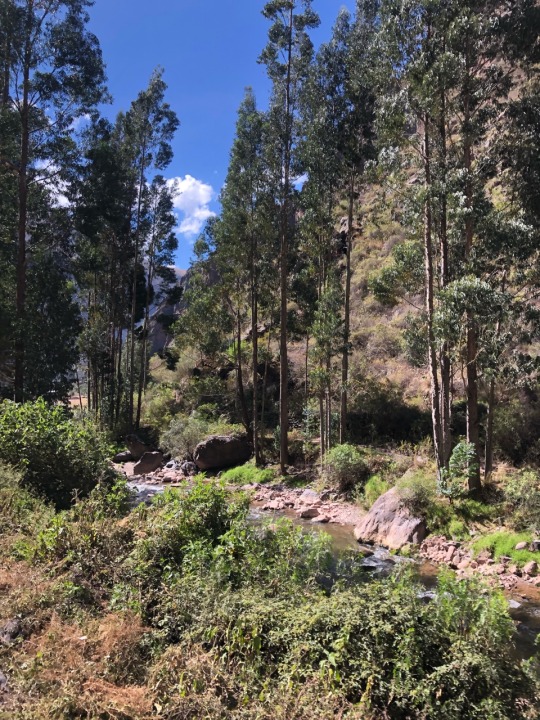
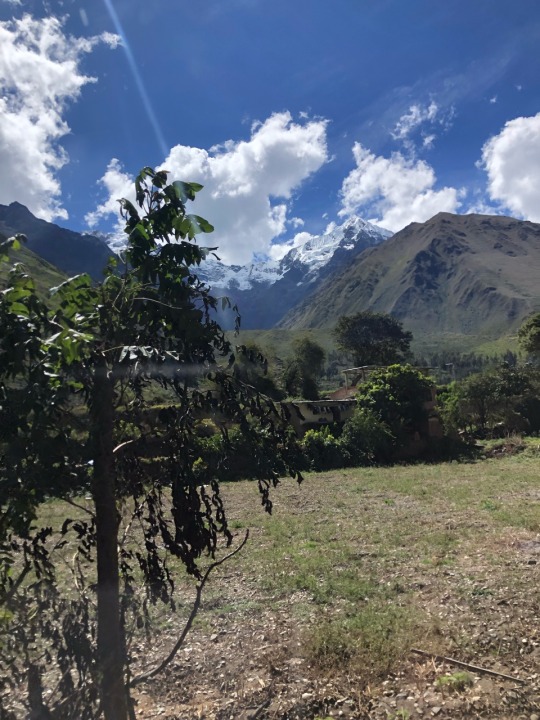

May 26, 2019- following el camino
I have departed for Aguas Calientes- the closest city to Machu Picchu!
In order to arrive here, I took a train (as walking wasmy really in the agenda, nor horseback, as Neruda had done about 75 years ago!)
Neruda would have had passes through the Andean country side, at the base of the Andes mountains, just as I had. Pretty incredible to think about.
I have departed for the Incan city- the inspiration of Neruda’s greatest epic poem. A little bit of reading the poem en route was a must.
I must say- reading about it as I arrived to Aguas Calientes, at the base of the Incan city was pretty cool. Upon imagining Neruda passing through as I had done this past may, I can’t help but get a little geeked out as I followed his footsteps.
0 notes
